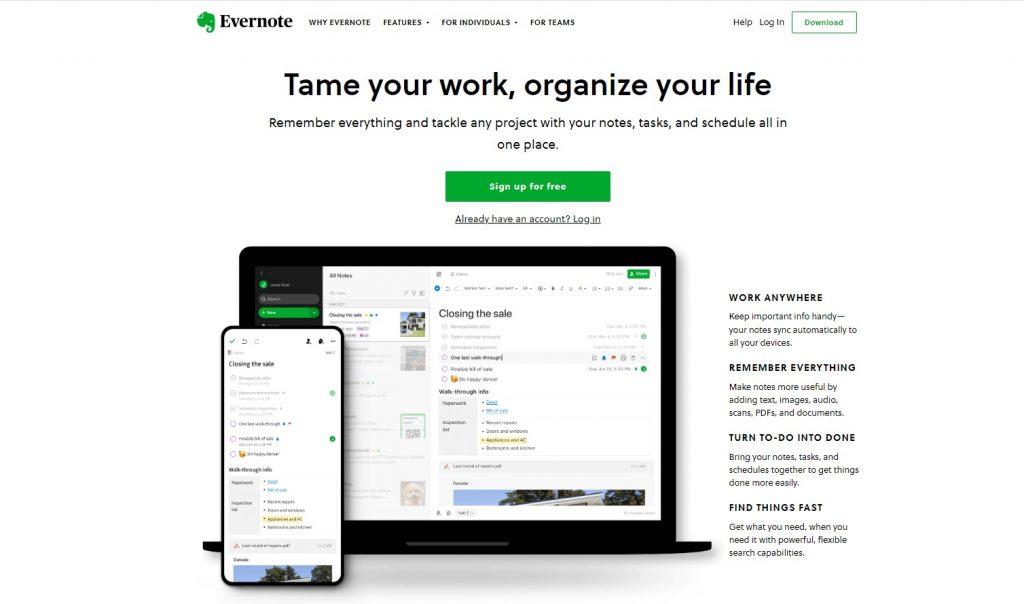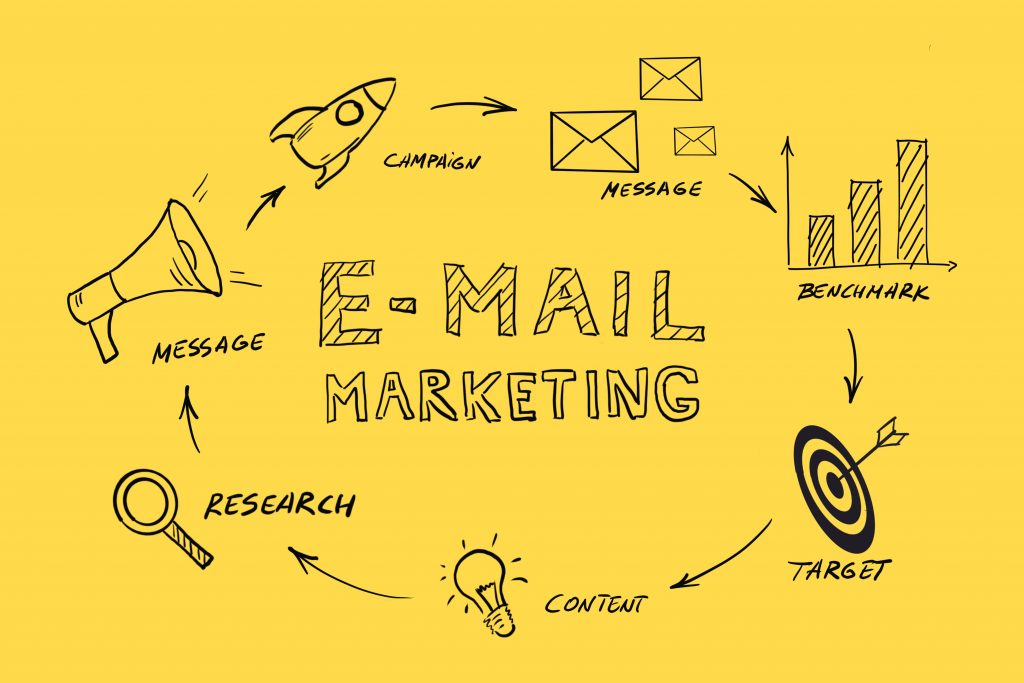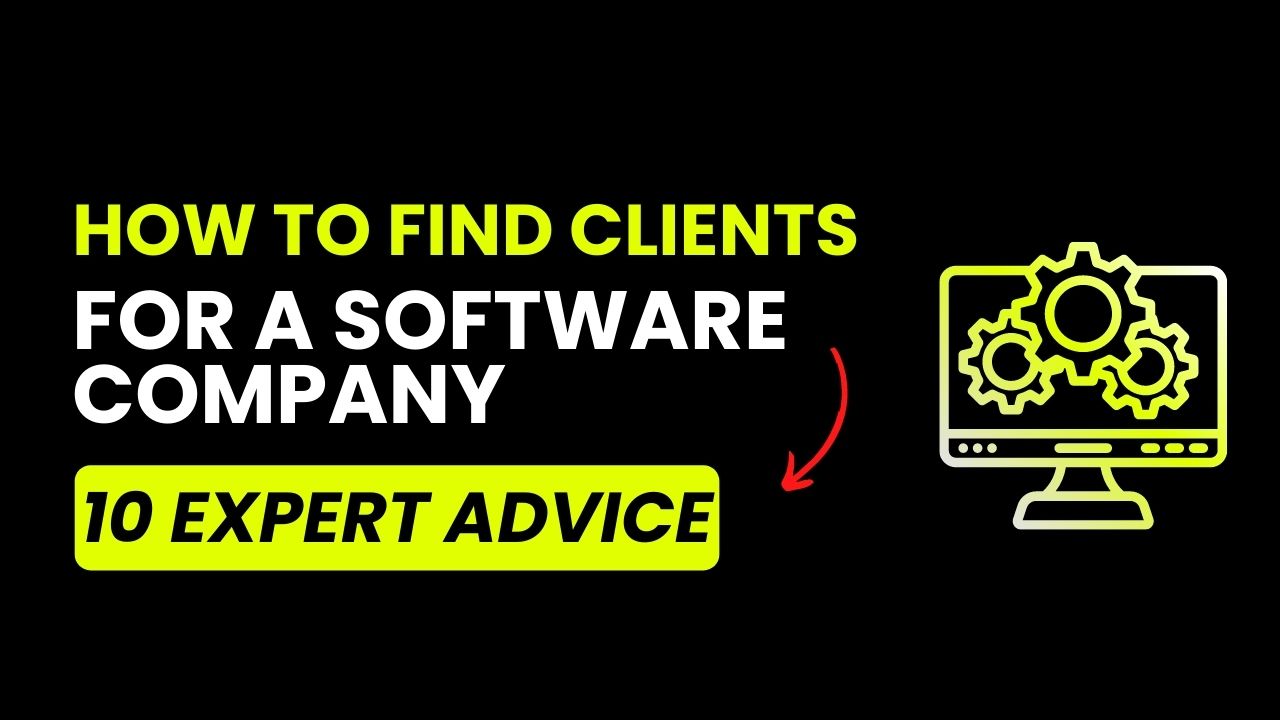Summary
This is “The Ultimate Guide on How to Find Clients for Software Company,” a blog guide that won’t just point you to your destination, but illuminate the journey towards it, sharing expert advice that will change the way you seek out your clients.
Are you ready to dive in?
Let’s get started.
What type of Clients needs their Software Made?

In the kaleidoscopic world of business, companies of all shapes, sizes, and sectors are increasingly reliant on custom software solutions.
From the nimble startup seeking to disrupt markets with its unique ideas, to the small and medium-sized businesses aiming to streamline operations and enhance productivity, all the way to the large corporations needing to integrate complex systems and automate processes, they’re all in need of software development services.
Startups, though smaller in size, tend to be large in their ambitions. They’re often looking for ground-breaking software solutions that give them an edge in their niche markets. They may need mobile apps, websites, or internal systems to streamline their young, growing operations.
Small and medium-sized businesses (SMBs), on the other hand, are in a different phase of their journey. As they scale their operations, they need software to automate tasks, manage customer relationships, or handle data. They might also need to upgrade their existing digital infrastructure to meet the evolving needs of their customers.
Large corporations are another breed altogether. They require complex software solutions that integrate seamlessly with their existing systems, often on a much larger scale. These solutions might involve enterprise resource planning (ERP), customer relationship management (CRM) systems, or advanced data analytics software.
In terms of industries, the demand for software development services spans across virtually all sectors.
Tech, retail, finance, healthcare, entertainment, logistics, education – you name it, they need it.
A tech firm might need a cutting-edge app, a retailer an e-commerce platform, a hospital a patient management system, or a logistics company might need software for supply chain management.
The opportunities are endless and diverse, mirroring the dynamic nature of the business world.
Navigating through this vast landscape might seem intimidating at first.
However, understanding the unique needs of different businesses, their sizes, and industries, not only illuminates the path but also reveals the variety of opportunities awaiting you.
Like a seasoned explorer, equipped with this knowledge, you’re now poised to chart your course, bridging gaps and providing solutions, in a world where businesses and software development intersect.
Onwards, fellow voyager!
Your quest to find your ideal clients just took a promising start.
Think about Scalability – Lay Down the Groundwork
As you embark on this quest to find clients, remember that like any successful marketing and sales expedition, it all starts with meticulous planning and laying down the groundwork.
You wouldn’t set sail on choppy waters without a compass, a map, and a solid vessel, would you?
The same applies to your journey in the software development landscape.
Here, we delve into the Preparation Phase – where we’ll align your compass, draft your map, and fortify your vessel, setting the stage for your successful voyage in finding clients for your software company.
Create Your ICP

You’re ready to sail, but where do you set your course?
That’s where your Ideal Customer Profile (ICP) comes in.
Like the North Star guiding sailors in the vast open sea, your ICP will lead you towards your most promising prospects.
Your ICP is a detailed description of the company that would get the most value out of your service and whose needs align perfectly with your solutions.
This profile isn’t a vague hypothesis, it’s a data-driven model based on market research, industry trends, and your unique strengths.
Consider factors such as company size, industry, technology stack, budget, and the challenges that your software solutions can solve.
An e-commerce startup seeking a custom CRM system?
Or a manufacturing giant looking to digitize their inventory management?
Your ICP will help you identify and target these prospects with precision and it’s the foundation of your sales and marketing initiatives.
Now, it’s important to keep in mind that drafting your ICP isn’t just a checkbox exercise.
It’s about aligning your business strategy with your target market, ensuring your efforts are directed towards customers who truly benefit from your offerings.
It’s about raising your sails and catching the right winds.
So, bring out the map, mark your ICP, and set your compass.
Write down Unique Value Proposition
The next step in your preparation phase is to Create your Unique Value Proposition (UVP).
Your UVP is like your ship’s flag, a distinct symbol that sets you apart from the fleet of software development companies out there.
It’s what makes you, you.
Your UVP answers a fundamental question for your prospective clients: “Why should we choose you?”
It encapsulates the unique benefits you offer, why your services or products are different, and how your solutions address clients’ needs better than alternatives.
Whether it’s your unrivaled expertise in a niche technology, your track record of delivering projects on time and within budget, or your innovative approach to problem-solving, your UVP should highlight these strengths compellingly and should be communicated in every piece of your marketing assets.
Crafting a strong UVP involves introspection, understanding your strengths, and recognizing the needs and pain points of your target audience.
Remember, it’s not about being the best in the world – it’s about being the best in the world for your prospective clients.
So hoist your flag high, let it unfurl in the wind, and watch it attract the clients who are a perfect fit for your software company.
Here’s a great UVP example from Evernote:

Showcase your Portfolio
Next up on our preparation list is to polish your portfolio.
Think of your portfolio as the ship’s log on your vessel.
It tells tales of your past voyages, showcases your capabilities, and gives prospective customers a glimpse of what working with you would be like.
The software development industry is a show-and-tell marketplace.
Your prospective customers will want to see proof of your expertise before they commit.
This is where a well-polished portfolio comes into play.
It’s a collection of your best work, case studies, testimonials, and other tangible evidence of your skills and achievements.
When crafting your portfolio, consider including a variety of projects that illustrate the breadth and depth of your capabilities.
Showcase how you’ve tackled different challenges and the results you’ve achieved.
Include projects that align with your Ideal Customer Profile and your Unique Value Proposition.
But remember, your portfolio isn’t a mere repository of your past projects.
It’s a storytelling tool.
Use it to weave narratives about how your software solutions have helped businesses overcome challenges and achieve their goals.
It’s about highlighting not just what you did, but how you did it, and why it mattered.
With your portfolio polished and ready to impress, you’re not just a ship sailing on a quest.
You’re a flagship, a shining testament to your capabilities, ready to win over clients in the sea of software development.
Create your Website
Now that your portfolio is shipshape, it’s time to build your website.
Consider your website as your digital flagship, anchored in the vast ocean of the internet, standing tall, ready to welcome prospective clients on board.
It’s where the world comes to learn about you, your offers, and the value you bring to the table.
A good website is more than just a digital brochure—it’s a 24/7 sales representative.
It should not only showcase your portfolio but also tell your brand story, highlight your Unique Value Proposition, introduce your team, and clearly explain your services.
Plus, it should make it easy for prospective clients to contact you.
Ensure your site is user-friendly, responsive, and mobile-optimized, given that more than half of global web traffic comes from mobile devices.
Prioritize good design and content – remember, you have a matter of seconds to capture a visitor’s attention.
A well-designed, compelling website is like a lighthouse in the dark, guiding prospective clients towards you.
It sets the stage for them to understand who you are, what you offer, and how you can solve their problems.
Once your site is live and shining bright, it’s time to attract visitors.
The journey continues!
Brush up your Social Media Accounts
In 2024, a robust social media presence is no longer optional – it’s a necessity.
Platforms like LinkedIn, Instagram, and Facebook are ideal for demonstrating your expertise, engaging with your audience, and broadening your reach.

LinkedIn, often considered the ‘professional’ platform, is perfect for connecting with businesses and professionals in software industry.
Regularly share relevant content, showcase your latest projects, participate in discussions, and don’t shy away from showing thought leadership.
On Instagram and Facebook, adopt a more visual approach.
Showcase your team, share snapshots of your work environment, give sneak peeks into your development process, and don’t forget to celebrate milestones.
These are perfect for building your company’s culture and giving a human touch to your brand.
Ensure that your social media profiles are consistent in terms of branding, messaging, and tone of voice.
And remember, social media is a two-way street – it’s about engaging, not just broadcasting.
Respond to comments, engage with your followers, and make sure to provide value in every interaction.
Done correctly, social media can be an incredible tool for growing your audience, building relationships, and ultimately, driving leads for your software company.
Use Light CRM in the Start
CRM, or Customer Relationship Management system, is the compass that helps you navigate the sea of potential leads, prospects, and clients.
It assists you in managing interactions, keeping track of your leads, and streamlining your sales process.
There are plenty of light CRM tools in the market designed specifically for startups and small businesses. Tools like HubSpot CRM, Zoho CRM, or Pipedrive offer freemium plans or cost-effective options that can fit your budget while still providing the necessary functionality.
A CRM system is essential because it helps you maintain organized, actionable, and measurable information about prospective leads.
It can aid you in identifying which stage a particular prospect is in your sales funnel, allowing you to effectively follow up with personalized messages.
Remember, when it comes to finding clients for your software company, staying organized and efficient is key.
An effective CRM system helps you do just that, ensuring none of your hard-earned leads fall through the cracks.
With your CRM set, your sail catches the wind, pushing your ship towards promising horizons.
Pricing Policies and Packages Configuration
Now that you’re set with CRM, it’s time to set up pricing policies and packages.
Your pricing strategy is a significant factor in attracting the right clients.
You need to strike a balance that reflects the value you offer, covers your costs, and remains attractive to your ideal clients.
Start by evaluating your costs, both direct and indirect.
Understand your market and analyze what your competitors are charging for similar services.
This will help you establish a baseline for your pricing.
Next, create packages that bundle everything you offer.
These packages should align with common customer requirements you’ve identified during your market research.
Remember, clients prefer simplicity and transparency in pricing.
Offering predefined packages not only simplifies decision-making for them but also positions the value you’re delivering more clearly.
However, remain flexible.
While packages can simplify things, every customer is unique and might have unique requirements.
Be prepared to offer custom solutions and negotiate pricing based on specific customer needs.
While setting your prices, keep in mind that you’re not selling lines of code. You’re providing a solution to your client’s problems. Your pricing should reflect the value of that solution and not just the time spent creating it.
A well-structured pricing policy assures prospects that they are dealing with a professional company that understands its value and delivers commensurate results.
With your pricing policies and packages defined, you are one step closer to a prosperous journey.
Performing Phase – 10 ways to get more clients for Software Company
In the Preparation Phase, you’ve laid the groundwork and set your sails.
Now comes the exciting part – setting course and navigating the open sea.
This is the Performing Phase, where we put everything into action to attract, engage, and convert prospective clients.
In this phase, we’ll delve into ten expert-approved strategies to find clients for your software company.
We’re talking about tried-and-tested tactics, practical insights, and actionable tips to help you set sail in the right direction.
From leveraging your existing network to tapping into online marketplaces, these are strategies that work – if you put in the work.
With these strategies, you’re not just casting a wide net and hoping for the best. Instead, you’re spearfishing – selectively targeting prospective clients who align with your ICP and can truly benefit from your service.
Are you ready to dive in?
The water’s fine, and the prospective clients are plentiful.
Let’s navigate through the Performing Phase together and help your software company reach new shores in 2024.
1. Ask your Clients for Referrals
First up on the list is a strategy as old as trade itself: Asking for Referrals from your Existing Clients.
It might seem straightforward, even a bit simple, but don’t be fooled – referrals are a gold mine of prospective clients for your software company.
Because trust is a currency in the business world, and a referral from a satisfied customer carries a lot of weight.
Why?
Imagine this scenario: You’ve successfully delivered a software project that’s streamlined a client’s business operations, and they’re thrilled with your work.
This client, impressed with your skills, refers your company to a fellow business owner in need of a software solution.
When they refer you to their networks, they’re not just passing along a name – they’re endorsing your services, which immediately establishes trust and credibility.
This means you’ve not only got the prospective client’s attention, but you’ve also got a massive head start over any competitors they may be considering because trust has already been established.
That’s the power of referrals.
So, how can you tap into this gold mine of trust and potential business? Here’s how:
1. Cultivate Solid Relationships
Before anything else, focus on fostering strong relationships with your current clients.
This means delivering top-notch service, being responsive to their needs, and going the extra mile to exceed their expectations.
The strength of your relationship with a customer is directly proportional to their likelihood to refer you.
2. Don’t Be Shy – Ask
It’s simple, but it’s often overlooked: if you want referrals, you need to ask for them.
Pick the right moment – maybe after a successful project delivery, during a positive feedback session, or even in a routine follow-up call.
Politely ask your clients if they know anyone in their network who could benefit from your service.
You’d be surprised at how many are more than willing to help.
3. Implement a Referral Program
Make referrals a win-win scenario by setting up a referral program.
This could offer rewards or incentives to clients who refer others to you.
The rewards could range from discounts on future purchaces to small gifts, or even a heartfelt thank you note.
The goal is to show your appreciation and encourage more referrals.
Remember, each referral is more than just a lead – it’s a prospective client who already has a positive impression of your business. Treat these referrals with the attention they deserve, and they can easily become your next satisfied clients, who may, in turn, continue the cycle of referrals.
2. Build your Network

Now, let’s move into an arena that is pivotal for any business, but is often seen as intimidating or elusive: Networking.
In essence, networking is about forging valuable relationships within your industry, and it’s an indispensable tool for reaching prospective clients.
While the term ‘networking’ might bring to mind images of stuffy corporate events and swapping business cards, it’s so much more than that.
Networking is about human connection.
It’s about finding common ground, sharing knowledge, and building relationships.
Yes, it can occur at industry events, but it also takes place in online forums, over social, through mutual connections, and in so many other ways.
Here’s the beauty of networking: It’s about quality, not quantity.
It’s not about how many business cards you can distribute or how many hands you can shake.
It’s about finding those key individuals, those influencers, decision-makers or connectors who can truly engage with your business and help you reach a wider audience.
In the digital age, networking has evolved.
LinkedIn, for instance, is a powerful platform for professional networking.
You can use it to showcase your expertise, share your success stories, engage with influencers in your industry, join relevant groups, and connect with prospective clients in need of your product or service.
Another aspect of networking is attending or even speaking at industry events.
This can position you as an expert in your field, allowing you to share your knowledge, showcase your offers, and meet prospective customers.
Remember, the goal of speaking at these events isn’t to sell a product or a service – it’s to educate, inform and add value.
And let’s not forget the power of local.
Engage with your local community.
Attend meetups, join local professional groups, participate in community events.
This can help build your reputation and visibility in your local area, which can translate into business opportunities.
In the end, networking is about building relationships.
And in those relationships lie opportunities for new clients, collaborations, partnerships, and growth.
So, step out of your comfort zone, extend your hand (literally or figuratively), and start building your network.
3. Event planning
Speaking of networking…
The concept of ‘Event Planning/Attending’ might seem a bit off the beaten path for a software company looking for clients, but believe me, it’s a path worth treading as we are already touched upon in the previous paragraph.
Events, both online and offline, are fertile ground for prospective clients.
Think about it.
You’re in a space filled with professionals who are likely to need software solutions, or at the very least, know someone who does. You have an opportunity to make an impression, not through a cold call or an impersonal email, but through a face-to-face interaction (or camera-to-camera, in case of virtual events).
It’s a chance to build relationships, showcase your expertise, and expose your brand to a wider audience.
So, how can you tap into this opportunity?
For starters, you don’t need to wait for an invitation.
You can plan your own event.
This could be a webinar about software development trends, a coding workshop, or a local business meet-up.
The goal is here not direct selling, but providing value, demonstrating credibility, and engaging with prospective clients.
When you plan an event, ensure it aligns with your brand and interests your clients.
Partnering with industry influencers or businesses can increase your reach and provide extra value.
And remember, a successful event relies heavily on effective promotion, so use your social, website, and newsletters wisely.
4. Provide Valuable Content
In our journey to find clients, our next destination is ‘Providing Valuable Content’.
This isn’t about direct sales, it’s about creating a platform for showcasing your expertise, establishing trust, and engaging with prospective customers. This is usually a blog section on your site.
Consider this: people love value.
They love learning something new, finding solutions to their problems, and gaining insights that can help them in their business.
This is where content comes in.
By consistently providing valuable content, you become a trusted source of information. You become a go-to resource.
And when the need for software solutions arises, who do you think they’ll turn to?
There are several avenues to provide valuable content.
Your company’s blog is an excellent platform.
You can write articles on relevant topics, create how-to guides, share case studies, or publish whitepapers.
The aim is to provide content that helps your audience and showcases your expertise in the process.
You can also utilize social media channels to share valuable content, engage with your audience, and build a following.
Videos, infographics, and webinars are great tools for this.
You can even leverage Youtube and publish videos there too for a bigger reach.
Writing guest post articles on reputable industry blogs or platforms is another effective way to provide value while gaining exposure to a broader audience.
Remember, the key here is consistency and quality.
The content you provide should be relevant, informative, and of high quality.
It’s not just about getting your name out there, it’s about positioning your brand as an expert and a trusted source in your field.
So, go ahead, start creating valuable content, and watch how it attracts prospective clients.
5. Partner Up with Similar Businesses
In the world of software solutions, partnerships can be an incredible source of new clients.
This brings us to the next point in our journey: ‘Partner Up with Similar Businesses’.
This strategy involves collaborating with businesses that offer complementary services.
Imagine this: You specialize in developing custom CRM systems, and you partner with a company that offers digital marketing services. This partner encounters a customer who wants to track campaigns within their CRM. It’s an instant referral for your business, and the customer gets a seamlessly integrated solution. It’s a win-win.
But remember, partnerships should not be one-sided.
Be ready to reciprocate by referring your clients to your partner when their needs align with your partner’s offers.
Mutual benefits fortify the partnership and lead to more opportunities down the line.
Start by identifying businesses that complement yours.
Look for those that serve similar markets or industries but aren’t direct competitors.
Attend industry events, use your network, and even consider online platforms like LinkedIn or Twitter to find potential partners.
Once you’ve found a potential partner, approach them with a clear proposition.
Highlight the benefits of partnering, how it can add value to both businesses, and ultimately benefit the clients.
Be open to negotiation and always maintain clear communication to ensure a smooth and successful partnership.
Partnerships can not only lead to direct referrals but also enhance your value proposition.
They can help position your business as a one-stop solution, making you more attractive to prospective clients.
6. Utilize Freelance Platforms
As our journey continues, we find ourselves in the realm of ‘Freelance Platforms’.
Yes, you read that right.
While freelance platforms may seem like a playground for individual freelancers, they’re also a fertile hunting ground for software companies in search of new clients.
How so?
These platforms house a plethora of businesses seeking out talented professionals to solve their software needs.
From small businesses looking for cost-effective solutions to larger companies seeking out specialized skills, the opportunities are endless.
Platforms like Upwork, Freelancer, or Fiverr are teeming with prospective clients.
It’s not just about finding one-time gigs – it’s about showcasing your expertise, building your reputation, and cultivating relationships that can lead to long-term contracts and referrals.
Getting started on these is relatively simple.
Create a compelling profile that highlights your skills, past projects, and unique value proposition.
Remember, you’re not just competing with freelancers – you’re competing with other software companies. Differentiate yourself. Highlight your team’s skills, the unique solutions you offer, and the successful projects you’ve delivered.
But here’s the secret sauce: Don’t just wait for clients to find you, instead be proactive.
Search for projects that align with your skills, submit proposals, and don’t shy away from small projects.
They can be stepping stones to larger contracts and positive reviews, which enhance your visibility and reputation on the platform.
While freelance platforms aren’t a traditional route for software companies to find clients, they offer a vast, accessible pool of prospective clients.
With the right approach and a dash of perseverance, these platforms can be a springboard to success.
7. Social Media through Organic Content Generation
The power of ‘Social Media – Organic’ as a means to attract clients cannot be understated in our digital era.
Today, platforms like LinkedIn, Facebook, Twitter, and Instagram offer businesses a vast, interactive stage to showcase their offerings, build their brand, and engage directly with prospective clients.
First, let’s dispel a myth: This isn’t just for sharing cat videos and vacation photos.
For businesses, it’s a powerful tool for storytelling, networking, and showcasing expertise.
You can use it to share insights into your work culture, highlight successful projects, offer glimpses of upcoming products, and share valuable content related to your field.
But remember, the keyword here is ‘organic’.
Organic social media growth is about creating and sharing content that resonates with your audience, engages them, and encourages them to interact with your brand.
It’s not about bombarding your followers with sales pitches, but about building relationships and trust, which in turn, can lead to business opportunities.
8. Email Lists and Newsletter

In the constant buzz of new and flashy marketing strategies, email marketing, specifically, the creation of email lists and the sending of newsletters, might seem a bit old school.
But don’t let its age fool you.
Even in 2024, email marketing is alive and kicking.
Let’s see some of its advantages.
For one, it’s personal.
Unlike a Facebook or LinkedIn post that’s aimed at a broad audience, an email lands directly in a client’s inbox.
This personal touch can go a long way in building a relationship with prospective clients.
Another advantage of this tactic is its reach.
Despite the popularity of socials, not everyone is on these platforms, but nearly everyone has an email address.
Finally, here, you control the narrative.
There are no algorithms deciding who sees your content and when.
Your message lands directly in the subscriber’s inbox, unfiltered and unaltered.
But how do you start?
The first step is to build an email list.
This could be visitors to your website who’ve signed up for updates, attendees at an event you’ve hosted, or contacts you’ve made through networking.
Just remember, always get permission before adding anyone to your list.
The next step is to provide value.
This could be in the form of a newsletter with insightful articles, industry news, tips and tricks, or exclusive offers.
The goal is to keep your subscribers engaged and interested in what you have to say.
Remember, each email is an opportunity to showcase your expertise, provide value, and build trust with your audience.
Over time, these factors can contribute to converting subscribers into clients.
9. Marketplaces and/or Agency Directories
This next method may seem rather traditional, but it’s proven and effective, and that’s ‘Marketplaces/Agency Directories’.
These platforms are essentially a meeting point for service providers and businesses seeking them.
Here, your software company can be listed among others, with the ability to showcase your offerings, past works, reviews, and more.
These directories are often visited by business owners and decision-makers, specifically looking for services like yours.
Being listed gives you a chance to be discovered by a prospective customer who might not have found you otherwise.
But it’s not just about being listed.
You must stand out.
You can achieve this by having a strong portfolio, glowing reviews, and a clear unique value proposition.
Remember, prospective clients browsing these directories are likely comparing several options, so you need to make your listing as compelling as possible.
Take advantage of these platforms, but don’t rely solely on them.
They should be just one part of your broader client acquisition strategy.
And speaking of broader strategies, let’s segue into our next method: ‘Cold Pitching’. Brace yourself.
This might get a little chilly, but I promise you, it’s worth it.
10. Cold Pitching
Cold pitching. It might sound a little daunting, and to be honest, it can be.
Reaching out to a prospective client out of the blue can feel like stepping onto a frozen lake.
But with the right approach, it can also be a powerful way to find new clients for your software company.
So, what is the ‘right’ approach?
Well let’s get something straight first: cold pitching isn’t just blasting a generic sales email to thousands of business owners hoping someone bites.
That approach will likely get you nothing more than a spot in their spam folder.
No, cold pitching is about doing your homework.
It’s about identifying prospective clients, researching their needs and challenges, and then reaching out to them with a tailored solution.
Remember, a cold pitch is not about you – it’s about them.
It’s about what you can do for them.
The pitch itself should be personalized, concise, and focused on the client’s needs.
It’s not about bragging about your achievements – it’s about showing the client how you can help them overcome a challenge or achieve a goal.
What you also want to do is to include is a clear call to action – what you want the recipient to do next.
This could be a reply to your message, a phone call, or a meeting.
Whatever it is, make sure to always include a CTA.
And yes, this method requires more effort, and the response rate might not be as high as with other methods.
But don’ forget: it’s about quality, not quantity.
One successful cold pitch can lead to a high-value, long-term client relationship.
Cold pitching is a bit like fishing.
It requires patience, the right bait, and a bit of luck.
But when you get a bite, it can lead to a rewarding catch.
Extra tip: Send Personalized Proposals!
In the digital age, it’s easier than ever to blast out a generic proposal to dozens of prospective clients.
But let’s face it, can you really expect to stand out from the crowd if you’re doing exactly what everyone else is doing?
A personalized proposal shows that you’ve taken the time to understand a prospective client’s needs, and you’ve thought about how you can meet those needs.
It shows you’re serious, professional, and committed to delivering value.
So, what should a personalized proposal include?
It should clearly outline the problem the client is facing and present a well-thought-out solution.
It should provide specifics about how your software company can help, and provide clear evidence of your ability to deliver.
This could include case studies, testimonials, or examples of past work.
Remember, the goal of a proposal is not to close a deal – it’s to get a meeting.
Your proposal should be intriguing enough to get the client to want to learn more.
A well-crafted proposal could be just the thing that sets you apart from the competition and helps you land that coveted client contract.
Lead Scoring
Now, that might sound like a term out of a sports playbook, but it’s actually a method to rank prospective clients based on the perceived value they could bring to your business.
But why is it important?
Well, imagine you have a pool of 100 prospective clients.
Without lead scoring, you might end up treating all 100 leads the same way.
You might spend the same amount of time and resources on each one, regardless of their likelihood to convert or the potential value of their contract.
With lead scoring, you can focus your efforts on the most promising leads – the ones most likely to become high-value clients.
How does it work?
It involves assigning points based on various criteria, such as the size of the company, their industry, their need for your services, their budget, their readiness to buy, and so on.
For example, you might assign more points to a large tech company in need of extensive software services than a small retail business just looking for a minor website upgrade.
Then, you concentrate your sales and marketing efforts on the leads with the highest scores.
This helps you prioritize your resources and increase the efficiency of your sales process.
But remember, lead scoring is not a one-size-fits-all solution.
It requires a deep understanding of your target market and constant refinement to ensure it’s accurately reflecting the value of your leads.
Measurement of Success and Testing New Theory
This is not just the final step in our process, but an ongoing commitment to learning and improvement.
You see, finding clients for your software company isn’t a one-and-done deal.
It’s a continuous cycle of planning, executing, measuring, learning, and adapting.
Every campaign you run, every pitch you send, and every client interaction is an opportunity to learn and improve.
The first part, measuring success, involves defining your key performance indicators (KPIs) and monitoring them regularly.
These could be quantitative measures, like the number of new clients or the increase in revenue, or qualitative ones, like client satisfaction or brand recognition.
Then, based on these measurements, you can identify what’s working and what isn’t.
This is where the testing new theory comes in.
Perhaps your LinkedIn posts are generating a lot of engagement, but your email campaign isn’t getting the open rates you hoped for.
So, you experiment with a new subject line, a different format, or a more personalized approach.
Or maybe your networking efforts are bringing in high-value leads, but your website isn’t converting visitors into clients.
So, you decide to revamp your site, make your call-to-action more prominent, offer a free consultation or even add a new product or offer.
Remember, the goal isn’t to achieve overnight success, but to create a cycle of continuous improvement.
This way, you’ll not only find clients for your software company but also learn to do it more efficiently and effectively over time.
And if you want to streamline this process and find high-quality prospects even faster, you may consider leveraging a dedicated tool, like ZeroIn.
Find High Quality Prospect and Close Deals Faster with ZeroIn!
In your pursuit of new clients, consider ZeroIn as your dependable sidekick.
This advanced email discovery platform is specifically engineered to enhance and streamline your prospecting efforts.
With a user-friendly CRM for organizing and handling critical prospect data, ZeroIn turbocharges your prospecting strategy, propelling it to unparalleled heights.
The real allure of ZeroIn isn’t limited to supplying contact details.
It delves deeper, offering a comprehensive array of more than 20 additional insights regarding your prospective clients and their respective companies.
Perfectly integrated with LinkedIn Free or Sales Navigator searches, ZeroIn’s browser extension uses your search parameters to delve into its extensive database, providing a panoramic portrait of your prospective clients.
With a remarkable range of up to 26 unique data points and a stringent 10-step verification protocol, ZeroIn assures the credibility and accuracy of each email address you come across.
This level of detail gives you confidence in the data you’re utilizing, allowing you to conserve time and resources in your prospecting process.
ZeroIn’s versatile features enable easy importing, re-verifying, and exporting leads in various formats, proving its indispensability in your outreach initiatives. Plus, its unique duplicate finder tool keeps your CRM data precise and current, further conserving your resources.
Tailored for small to medium businesses in search of affordable and efficient email discovery and management solutions, ZeroIn presents a one-time lifetime payment offer.
With ZeroIn as your reliable companion, you’ll be able to establish connections with the right people at a faster pace and with more efficiency.
This allows you to enhance your prospecting abilities, ultimately driving your business to new horizons of growth.
Ready to give it a try?
Companies that use ZeroIn:

Contact us/Book a Demo/ Get 25 free Credits/ Create a Free Account and Get 25 credits!
